-Alex
December 2007

Black Dike trip report

How do you set out to solo the Black Dike if you’re neither Will Gadd nor Will Mayo but a mere mortal of mediocre climbing skills? The beginning of the story does not suffer from the excess of originality: “Climb it if you want, what does it have to do with me?”, said SHE, and the destiny was sealed. We just got down after climbing three pitches of Gluecksritter , a beautiful ice route in a secluded Swiss valley. In a few hours we’d head in different directions, that was really it. Darkness was enveloping the heavens and the earth, and soloing the Black Dike was the only rational thought in the ocean of despair.
Now do you expect that upon returning to Boston the heart-broken dude would head up the climb right away - preferably without tools and barefoot? That would make the story much shorter (and you’d be reading it in “Accidents in N.A.M.” under “Stranded on the Approach, Inadequate Footwear”). No such luck: the only way I could do this would be safely and reliably. And so the plan was to do the route with a partner, make sure it’s in good condition and can be done with a sufficient safety margin, and then return to do it solo (with a rope in the pack and enough rappel material to get off the route if the need be).
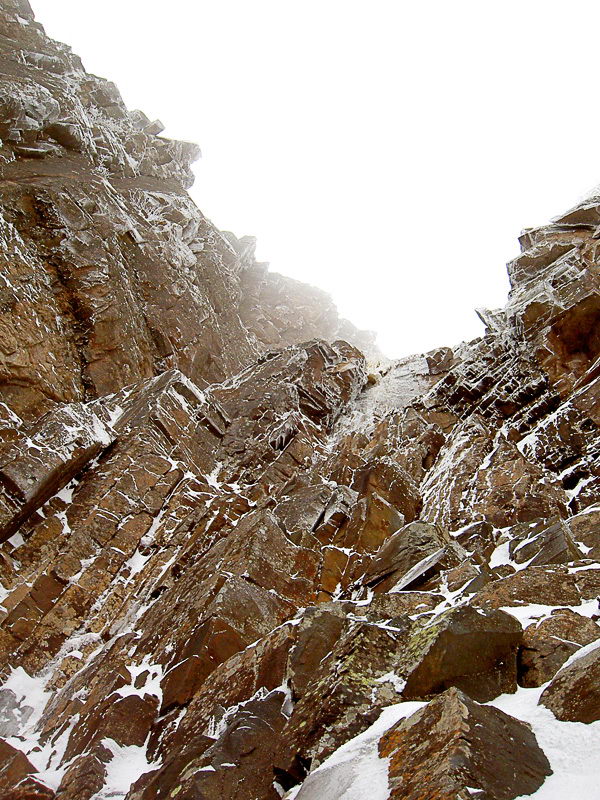
And so upon returning to Boston I headed up the climb with Victor – and promptly got off route. Despite the fact that both of us had done the climb before, we somehow decided that two pins high above the belay marked the start of the “rock traverse”. I climbed to the pins and found the terrain unfamiliar and harder than I remembered. After lingering there for a while, trying to start the traverse lower, then higher, then lower again, getting advice from Victor, I finally managed to traverse with a lot of difficulty. It turned out the pins were on “Hassig’s direct” (which goes straight up) and I traversed much higher than the regular route. Our troubles didn’t stop there: a rope jammed, then Victor fell with a big pendulum etc… we made it to the top but soloing was momentarily out of question.
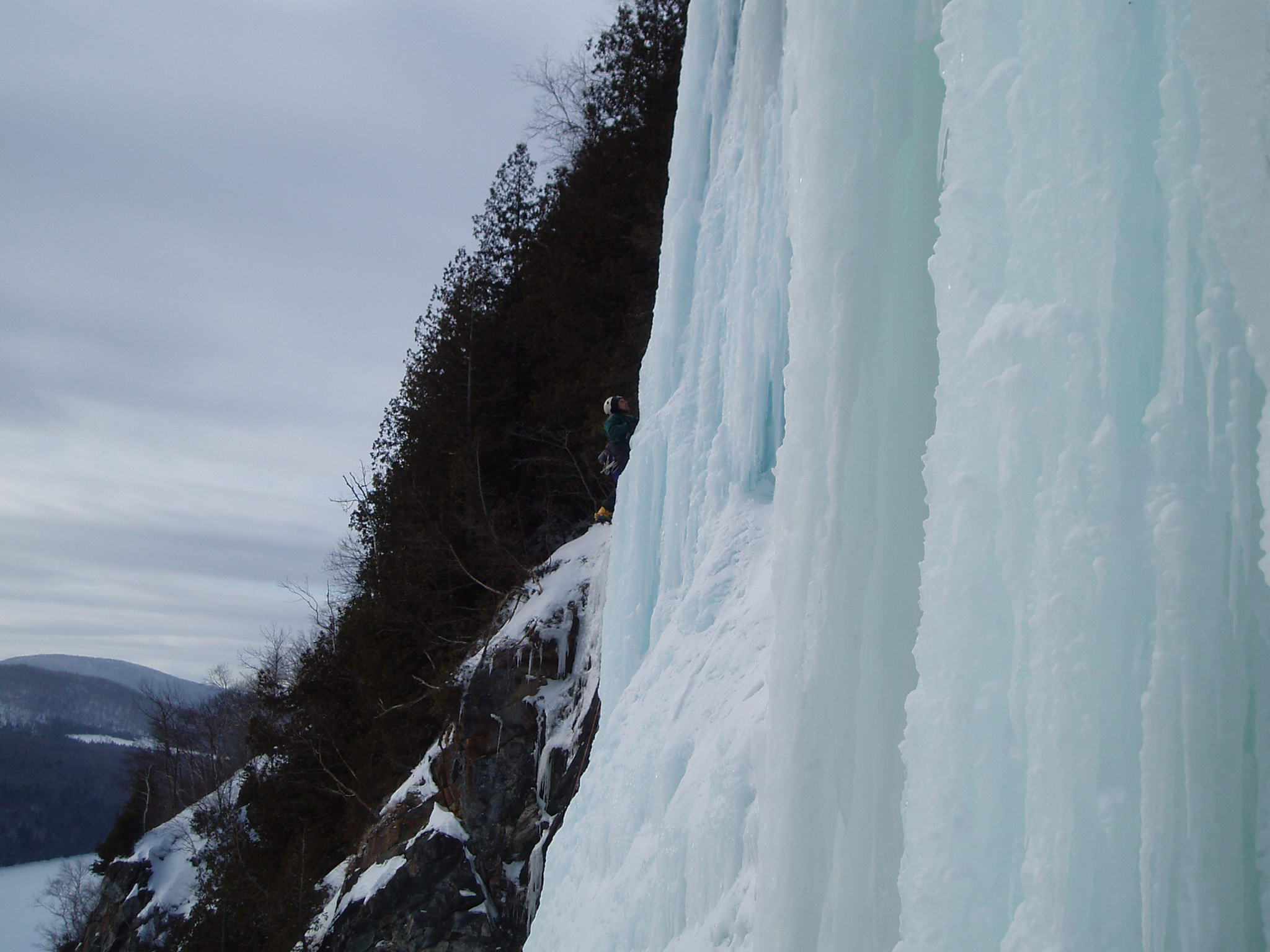
I wanted to get back on the climb to do it the right way. In the meantime the season was winding down, it was already April and according to the condition reports everything was OUT. By my calculations the Dike might still be doable, but none of my friends was interested in ice anymore. Suddenly somebody sent a message to the MIT climbers list: “looking for an ice partner”. “To the catcher runs the beast” goes Russian saying, a British guy of course – who else would be looking for an ice partner in April!

Heading into unknown conditions with a new partner – this is an adventure! Ever changing conditions is one thing that makes ice climbing so exciting. A rock route is always the same (this may be not quite true for Cannon where one finger crack recently turned into a handcrack :). An ice climb, however, may feel like a new route every time you do it. We come to take a look at Mindbender at lake Willoughby one day – oh boy, this is so steep! Filled with awe, we’re watching a strong party do it in one 60m pitch. Come back in a few weeks, and there’s a whole new formation: two huge columns with nice stemming and plenty of features, now that’s climbable! As to the Dike, sometimes you can’t even tell from the base of the route what the conditions higher up are – climb it and find out.
Thus on April 9th Steve and I drive into the Cannon parking lot at 5a.m. (to make use of the colder part of the day), and to our great surprise find another car already there – and two pairs of tracks leading from it! We follow the tracks down the bike path, here’s the approach trail – and the tracks turn into it. A pair of bigger boots, and a pair of smaller ones... The footprints are quite fresh, but looking closely I can notice a bit of melting and refreezing, which gives me some hope that we won’t be bombarded with ice from a party above. Finally we come to the base of the climb – and see a tent one pitch up Witney-Gilman ridge! Which immediately reminds me of my friend Boris I. who “always wanted to do a night ascent of W-G with a female partner – the ledges there are so luxurious!”. Well, apparently he was not the only one to come up with this fine idea. When we finished our climb and came back to the parking lot the tent was still up there – folks were clearly having a great time on a warm and sunny spring day. The Dike was actually in the best condition for the season (and I found the traverse with no trouble this time - it’s so obvious you can’t miss it:), but this was really the last climb of the year – in a week all was gone.
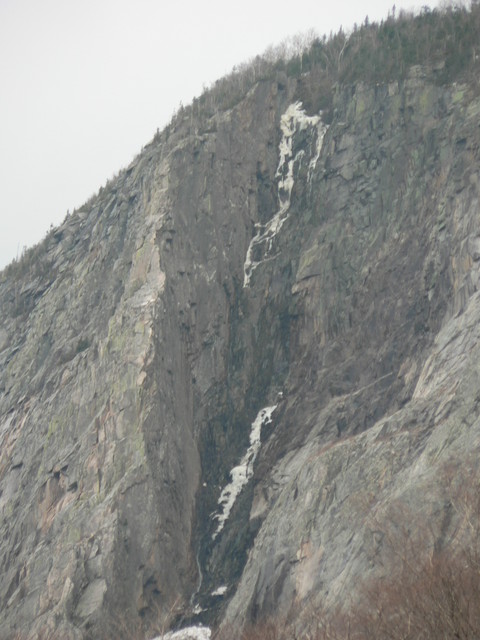
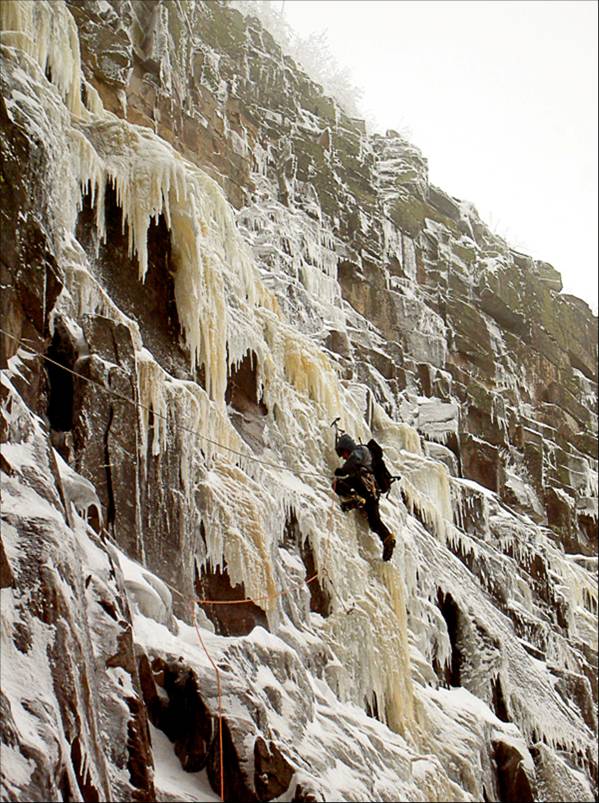
Next year the season started slowly: on Thanksgiving we’d still climb Whitney-Gilman in climbing shoes. After the first snow covered the cliff, Dima and I attempted to do Lakeview in crampons but were stopped by a 5.4 slab. It wasn’t until the last day of the year that I returned to the Dike with Misha, while Dima and Boris headed up Fafnir. The route was in really good condition this time, but the moves on the rock traverse, albeit not difficult, still didn’t feel quite secure for a solo.

A couple of weeks later I took a fall at lk. Willoughby – a chunk of ice came off and knocked me off my feet. That was unexpected and unpleasant – I was placing protection and came out unscathed, but it was on easy terrain that I would normally consider safe for soloing. In another week or so front bails on my both crampons broke – on the lead, but fortunately on a short climb. After one crampon broke I got lowered, borrowed a crampon from a friend, went up the climb again - and a couple of meters above my previous high point the second crampon broke! Impressive manufacturing consistency (considering that crampons were 7 years old)!
These events somewhat cooled down my enthusiasm for solo climbing. The Dike, after a good start, thinned down and remained in pretty thin conditions all season. Yet an invisible force continued to pull me up there – and in the end of March I was back, this time with Ilya. I thought I had figured out this climb and calculated that after a period of rains followed by a fast freeze there would be ice. Indeed, ice was covering everything: the parking lot, the trees, the talus field on the approach. The route was all covered with thin verglass – but that was about it. I thought I had climbed it in thin conditions before but this time it was, as my friend Boris D. would put it, “not just horror but horror horror horror”. I’m sure good climbers have no problem doing this route without any ice at all, as long as the rock is frozen in place – but they at least know how to place pitons…
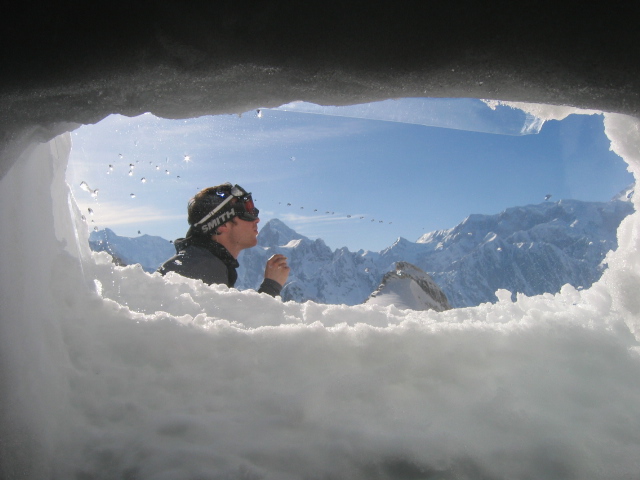
Anyway, it turned out that the first pitch was climbable on stepped rock to the right of the usual ice route and there were even some gear placements (how many times did I take nuts on this climb – just in case - and now finally they were useful). And on one of the rock steps a great prize was awaiting – a shiny new BD express ice screw! I wished I could supplement our rack with some booty rock gear too, as it turned out that somebody had removed the fixed belay station on p.1. Later we had to move the belay anyway – to get farther from the falling ice that was continuously coming down the sunlit face to the right. The second pitch was also very thin, with all cracks filled with ice making it harder to protect (did somebody remove the fixed pin at the end of the rock traverse!?). When I was in the chimney, a big chunk of rock flew by with great speed – apparently the sun was already melting things on top of the route. Fortunately, higher up there was more ice and the third pitch was quite reasonable. That was a memorable experience – and certainly felt like climbing an entirely different route.
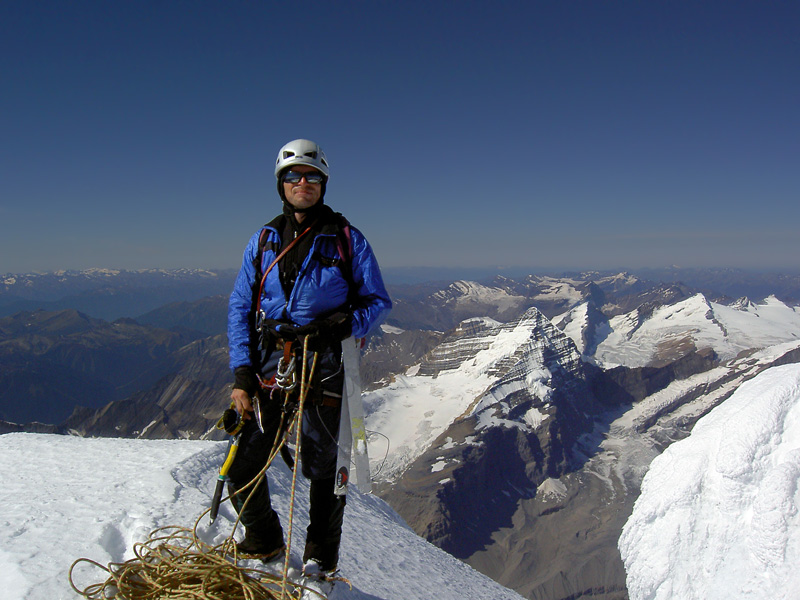
Finally, for those of you who had patience to read this far, our story comes to this winter – the best start of an ice season in ages! And I’m a happy owner of almost new Sarken crampons (never mind the recall:) and some more new BD screws picked up for $15 apiece at some crazy sale at REI. On Thanksgiving we climbed the Dike with Misha, and there was already more ice than I’d seen in the past couple of years. Next weekend we did Fafnir with Dima and in another week Adilet and I came back with the plan to do “Hassig’s”, but it was so cold that we left it to a more able party and headed up the normal route. No rock traverse this time – good ice all the way, bottom to top. Plentiful holes and steps from all the traffic the route is seeing made the climbing feel easy.
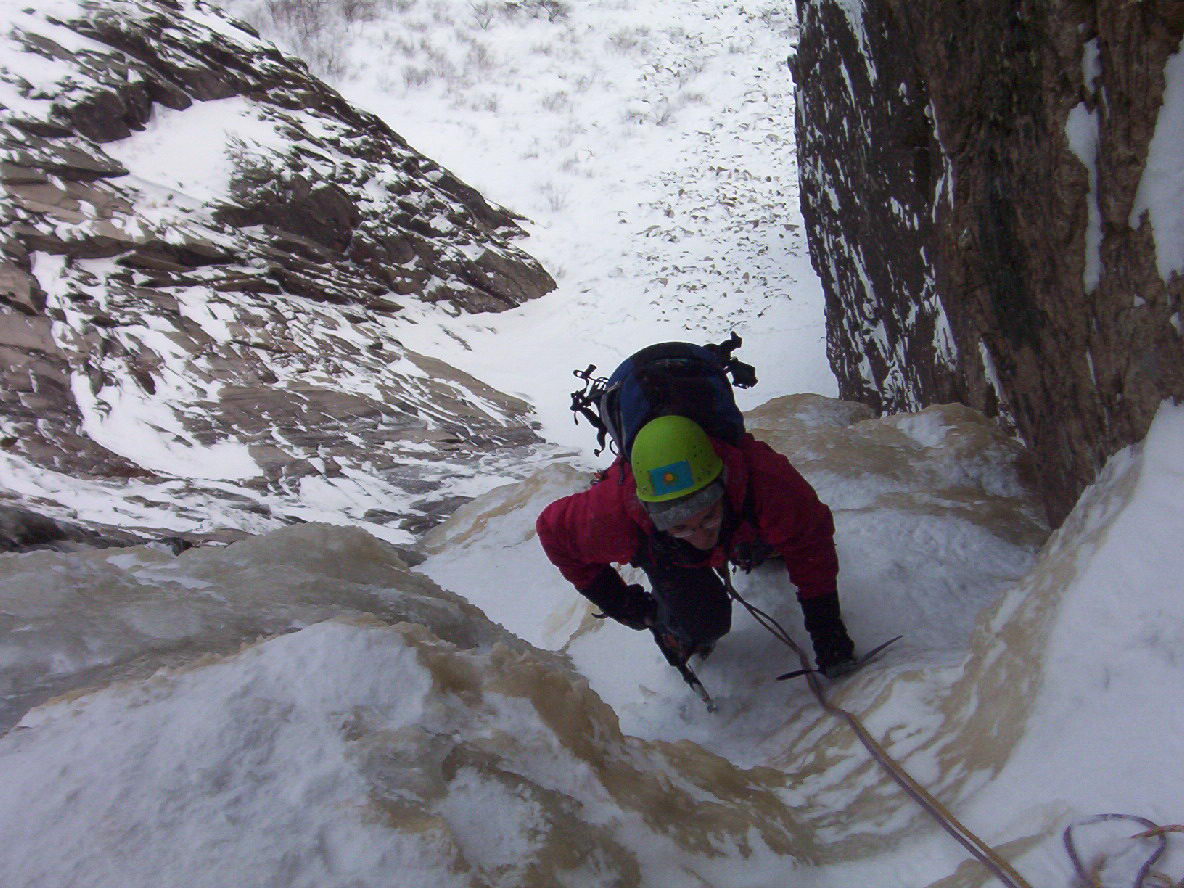
It was clear that now was the time: who knows when the Dike will get this thick again. Recently I became happily unemployed and thus have plenty of time for climbing (and indulging in graphomania:). And so on Friday, December 14th, after Boston got hit by the first big snowstorm of the year, I drove to Franconia Notch and finally soloed the route.
This was my tenth time on the climb – and I still like it a lot. We don’t have Alps or Rockies or Caucasus, this is just Cannon, a disintegrating cliff by the road, but it’s the alpine climbing we’ve got in New England, and it’s a lot of joy. I’m grateful to my partners with whom I shared the rope on winter Cannon: Simon Genzer, Alexey Shuruev, Dima Shirokov, Kate Vorotnikova, Julia Snihur, Olga Mirkina, Victor Lyamtsev, Steve Block, Misha Tselman, Ilya Tatar, Adilet Imambekov. Kameraden – I need you! Hope to climb with you again soon – no more soloing.
Merry Christmas and Happy New Year everybody,
-Alex
December 2007
